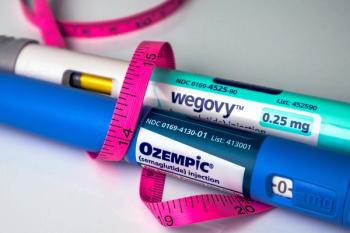
Apixaban Is Only NOAC with Lower Stroke Rate for Both Doses Compared to Warfarin in Large Study
A massive retrospective study compared several non-vitamin K antagonist oral anticoagulants (NOACs) to warfarin.
In a very large study, apixaban (Eliquis) was the only non-vitamin K antagonist oral anticoagulants (NOAC) found to be associated, in both doses, with lower rates of stroke or systematic embolism and major bleeding in nonvalvular atrial fibrillation patients when compared with warfarin (Coumadin).
The massive retrospective, observational study was
Researchers set out to compare the safety of non-vitamin K antagonist oral anticoagulants (NOACs) versus warfarin by NOAC dosage because there is limited real-world evidence on the topic.
For this study of nonvalvular atrial fibrillation patients, researchers used data from CMS Medicare and four other U.S. commercial claims databases. These encompassed more than 180 million beneficiaries annually-approximately 56% of the U.S. population.
“Both the size and the breadth of the data assessed contributes to the significance of this study. In particular, this study offers insights on patient populations not evaluated in clinical trials, such as the elderly,” Steven Deitelzweig, MD, tells Drug Topics. Deitelzweig is lead author of the study and system director chair of the Department of Hospital Medicine and vice president of medical affairs at
The real-world data analysis included older patients, who made up only a small portion in the clinical trial study populations of the DOACs. “It is important to assess these populations and their care in the real world so we can get better data about correct dosing. We are finding that it’s often approximately 25% of patients that are treated with an adjusted dose,” Deitelzweig says.
Deitelzweig and colleagues found that all doses of NOACs were associated with lower rates of intracranial hemorrhage compared with warfarin. Standard-dose and lower-dose apixaban patients were both associated with lower rates of stroke or systemic embolism (S/SE) and major embolism (MB) versus warfarin.
Standard- and lower-dose dabigatran (Pradaxa) patients had similar rates of S/SE compared with warfarin. Standard-dose dabigatran patients had a lower rate of MB and lower-dose dabigatran patients had a similar rate of MB versus warfarin.
The researchers also found that standard-dose rivaroxaban (Xarelto) patients were associated with a lower S/SE rate, and lower-dose rivaroxaban patients had a similar rate of S/SE compared to warfarin. Standard- and lower-dose rivaroxaban patients were both associated with higher MB rates compared to warfarin.
The study also compared the costs of each of anticoagulants and found that patients taking apixaban and dabigatran had, on average, $350 lower healthcare costs per patient per month than rivaroxaban when compared with all-cause healthcare costs of warfarin.
“This study asks us to think about the value of these drugs going forward,” Deitelzweig says. The real-world data “can play an important role in the decisions I make on behalf of my patients’ care plans,” Deitelzweig says.
“Ongoing investigation and analyses of real-world data will further contribute valuable information for everyday practice consideration.”
The study was funded by the BMS-Pfizer Alliance. Bristol-Myers Squibb and Pfizer are the makers of Eliquis.
Newsletter
Pharmacy practice is always changing. Stay ahead of the curve with the Drug Topics newsletter and get the latest drug information, industry trends, and patient care tips.




